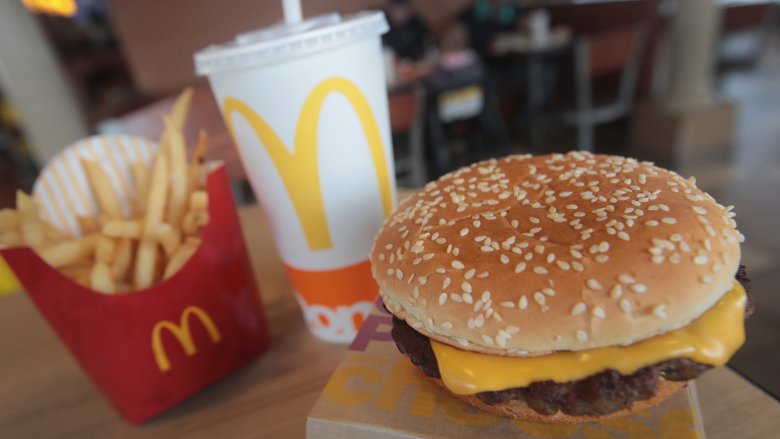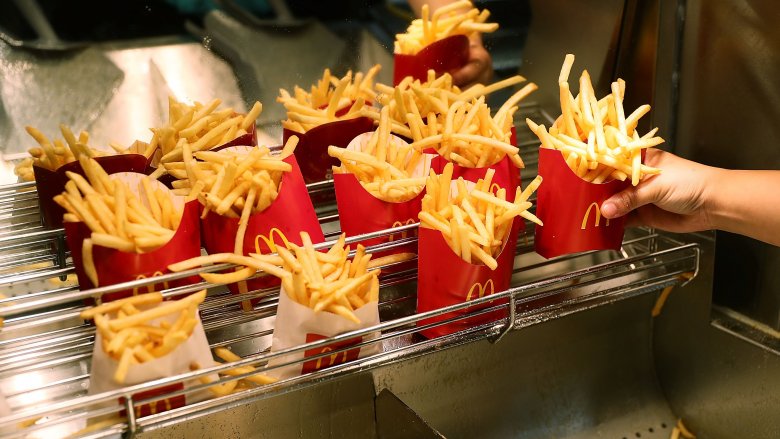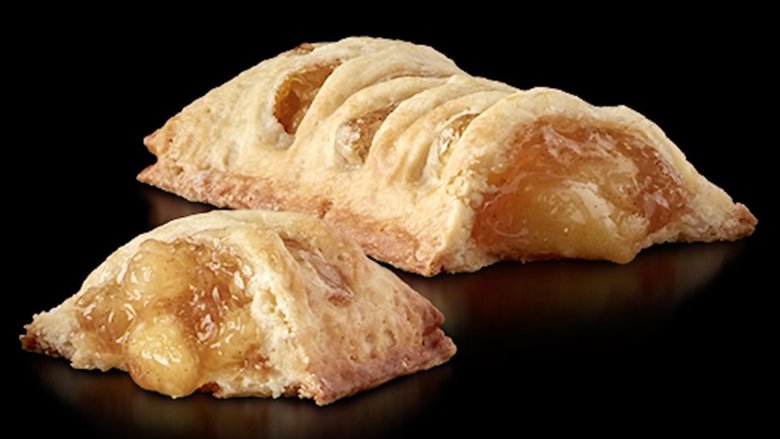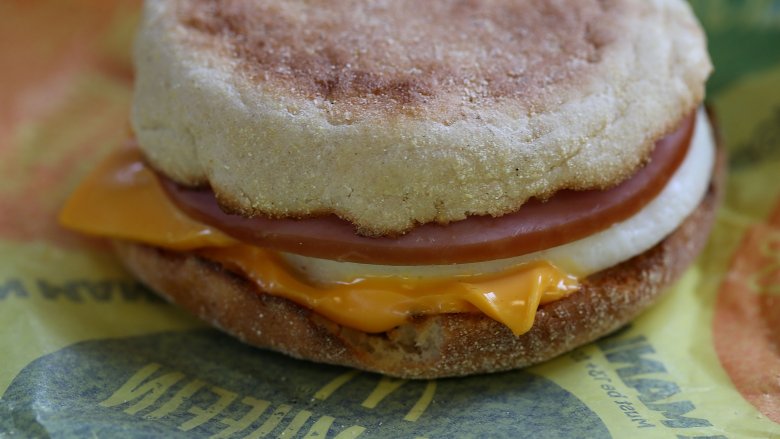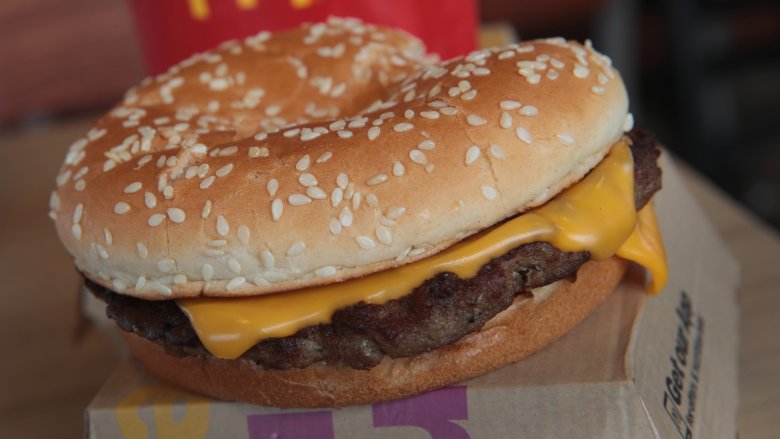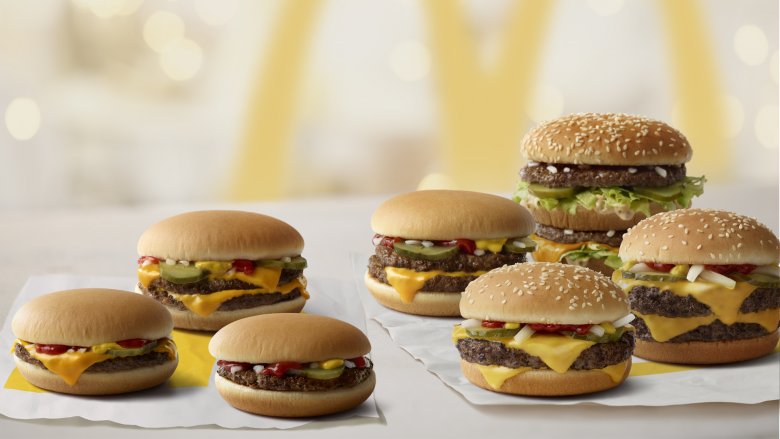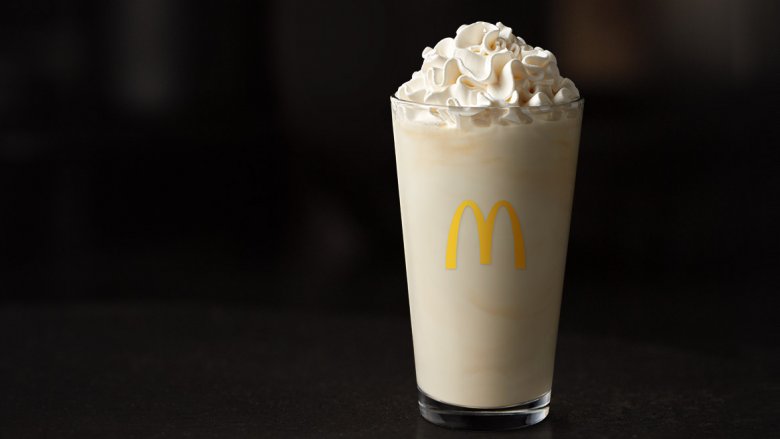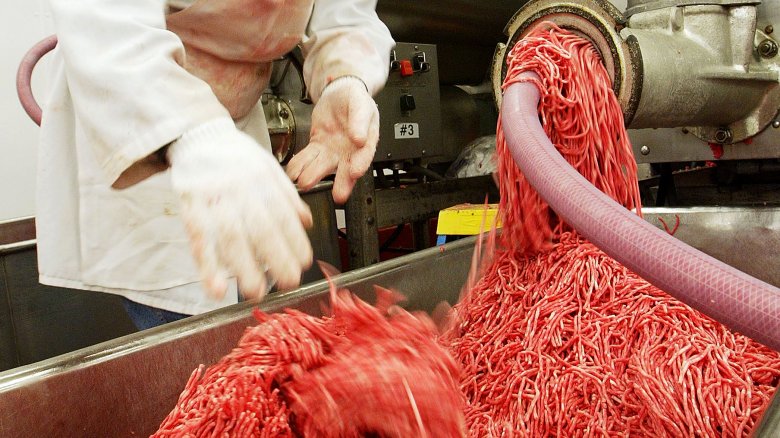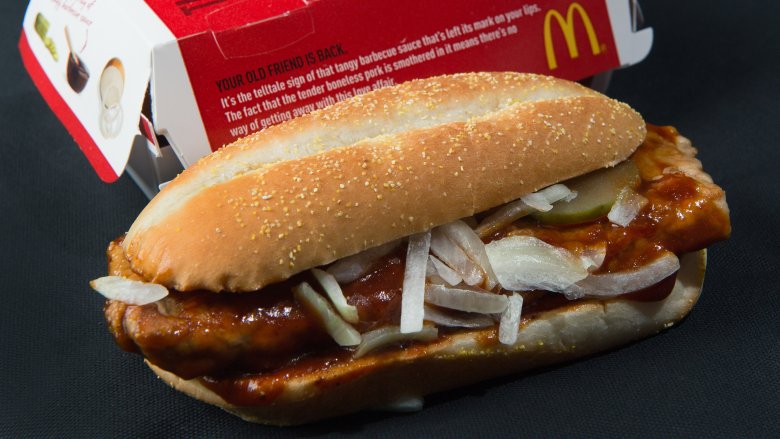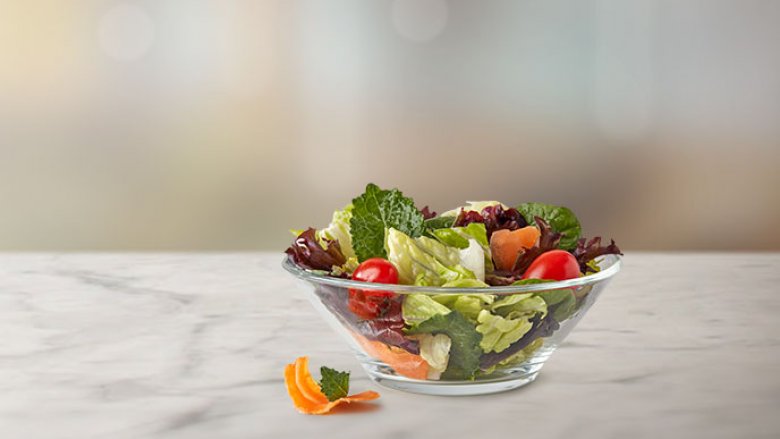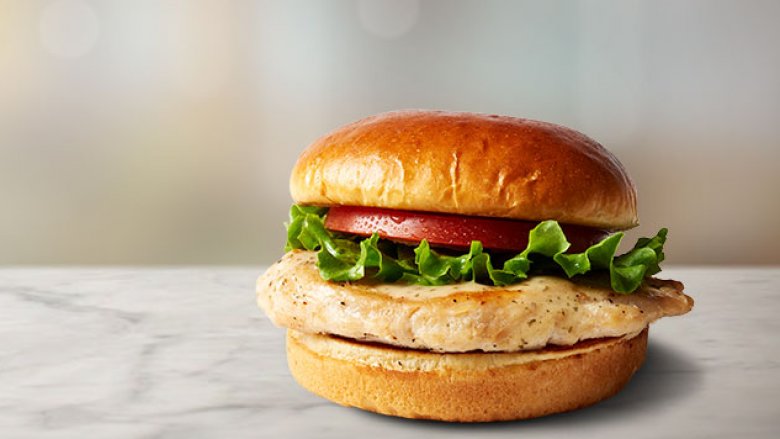McDonald's Recipe Changes You Might Have Missed
McDonald's will be the first to tell you about the "billions and billions served" at their restaurants, and chances are at some point in most of our lives we've settled in for a meal at the Golden Arches.
But what we feasted on during family road trips as a kid might actually look and taste a lot different from the food they're serving up today. That's because over time, the company has made a lot of changes to their most iconic menu items, altering recipes and cooking methods to keep up with consumers' tastes and the changing times.
Everything from the classic french fries to the Quarter Pounder have gotten significant makeovers, but we shouldn't be surprised. It's hard to serve up literally billions of burgers without finding some room for improvement, after all!
If you've been munching away happily all along, you may have missed some of these changes. Read on to find out just how different that value meal is from the one you enjoyed in your youth.
The french fries used to be fried in beef tallow
McDonald's french fries may still be frequently voted as the best fast food fries out there, but what we taste today is actually a modification of the original recipe.
The classic McDonald's fries were cooked in a combination of cottonseed oil and beef tallow (rendered beef fat), which gave them their uniquely rich flavor. However, beef tallow is high in saturated fat, and after years of pressure from the public, they switched their recipe in 1990 to accommodate their customers' changing tastes.
The chain started cooking their fries in vegetable oil, but to give them that signature flavor that people were used to, they added natural beef flavor to the recipe.
Natural beef flavoring isn't always made with beef, but McDonald's uses one that contains milk and wheat ingredients, which is important to know if you suffer from allergies or are vegan. They do have to include that warning now so that no one eats them without realizing the fries contain those add-ins, but at least they're lower in saturated fat!
The apple pie was given multiple makeovers
What's more American than apple pie? McDonald's apple pie, piping hot and ready to eat as soon as you pull out of the drive through. But when McDonald's unveiled a new apple pie recipe in 2018, the internet was less-than-pleased. The latest version of the pie had less sugar, a simplified ingredients list, and sliced rather than chopped apples.
Yet, in spite of everyone's lamenting, it's actually not the first time that McDonald's has changed their recipe for the iconic fast food dessert.
The original apple pie, introduced in 1968, was deep fried until crisp and golden on the outside. Then, in 1992, the chain switched to baked pies.
The latest iteration of the pie was developed and tested in Southern California before being rolled out nationwide. All told, while the classic apple pie was their first dessert, it started a trend; there have now been more than 40 different versions of pie sold at McDonald's over the years.
The breakfast sandwiches are now made with real butter, not liquid margarine
Other than bacon grease, no cooking fat is so associated with an American breakfast as butter. But for a long time, McDonald's used liquid margarine to make their breakfasts.
In 2015, that changed. Following a move to minimize the ingredients lists of their menu items and cut back on antibiotics in their chicken, the chain announced that they would be ditching the liquid margarine in favor of real butter.
Why the switch? According to Jessica Foust, the head chef at McDonald's, "It just didn't taste as good."
These days, butter is used on the grill where breakfast items are cooked, and it's also spread on the toasted English muffins, bagels, and biscuits that are used to make their classic breakfast sandwiches.
Apparently the move to real butter was a successful swap. McDonald's reported that sales of the McMuffin increased by double digits when they made the change.
The Quarter Pounder switched to fresh beef from frozen
McDonald's is in a volume business, so it makes sense that for a long time, all of their burger patties were formed off-site and then shipped to their stores frozen where they could be quickly cooked on the grill. But today's consumer isn't all that interested in frozen meat, and McDonald's competitors that do use fresh beef (Wendy's, Whataburger, and In-N-Out, for example), started using that as a selling point.
But that's just one of the reasons why they switched to fresh beef for their Quarter Pounder and Signature Crafted Recipes burgers in 2018.
The patties are cooked to order, not batch-cooked like the frozen patties. This means consumers might have to wait a little longer for their meals, but they'll be delivered a piping-hot sandwich instead of one that's been languishing beneath a heat lamp for an hour.
Making the change cost McDonald's an estimated $60 million, as they needed to make updates to their supply chain and also to their kitchens, where new equipment was necessary to ensure that the fresh beef would be properly handled and held at a safe temperature.
Artificial colors, flavors, and preservatives were removed from most McDonald's burgers
There's been no shortage of rumors about the quality of McDonald's food, but lately, they've been making moves to ensure that all of their menu items are totally above board.
One of the latest? In September of 2018, the chain announced they had removed all artificial preservatives, artificial flavors, and artificial added colors from all of their classic burgers.
The change included some of their most iconic items, including the hamburger, cheeseburger, double cheeseburger, McDouble, Quarter Pounder with Cheese, double Quarter Pounder with Cheese, and Big Mac.
It's not just the meat that was affected. The artificial ingredients were removed from the other ingredients, too. There's just one caveat. The pickles that McDonald's uses do contain an artificial preservative, but they decided not to remove it. Instead, they recommend asking to withhold the pickle for those customers who prefer no artificial ingredients.
They removed artificial ingredients from their ice cream in 2017
McDonald's is primarily known for their savory offerings, but they have a dessert menu, too. In fact, their vanilla ice cream, used in their hot fudge sundaes, McFlurries, plain ice cream cones, and more got a major makeover in 2017. That's when the company announced that they had removed all artificial preservatives and colors from their frosty treats.
The process began in 2016, and was rolled out to all 14,000 of their restaurants over the next few months. But the chain didn't actually announce the switch until after it was complete.
The ice cream, which is used in more than half of the McDonald's desserts, was rigorously tested to "ensure taste was not impacted" by the change in recipe, according to Darci Forrest, senior director of menu innovation at McDonald's. About 68 million cones featuring the new recipe were served before the cat was let out of the bag, proof in itself that the new version could stand up to the original recipe.
They stopped using pink slime in their burgers
In 2011, an ingredient dubbed pink slime was making big headlines in the news, especially after it was featured on the Jamie Oliver show Food Revolution.
"Pink slime," more formally known as Lean Finely Textured Beef, is a product made of beef scraps that have been ground up, defatted, and treated with ammonia to kill pathogens, then used as a filler with the ground beef that we're more familiar with.
Oliver showed how it was made on his show, and it made international news. People were up in arms that McDonald's was allegedly using pink slime in its beef, so they decided to make a change to their recipe.
In 2012, they announced that they would no longer use ammonium hydroxide to sanitize their beef. They claimed that "the decision to discontinue its use was not related to any particular event," though the announcement was made mere months after Oliver's expose. Instead, according to the company, "This decision was a result of our efforts to align our global standards for how we source beef around the world."
They removed high fructose corn syrup from their buns
Burgers, cheese, pickles, and condiments all tend to be salty, so a little sweetness is always welcome to help balance the flavors out. At McDonald's, the sweetness comes from their buns. But how that sweetness is added to the dough has changed.
Originally the buns were sweetened with high-fructose corn syrup, a much-maligned ingredient that began to dip in consumer favor (back in 2011, 35 percent of consumers said that they tried not to use products with HFCS, and 84 percent said they thought companies should be required to say how much HFCS is in their foods).
Then, in 2016, McDonald's announced that along with removing artificial preservatives from their chicken McNuggets and some breakfast items, they would also start using real sugar to sweeten their burger buns. This was just one of the many moves they'd been making to have their menu be more customer-friendly and for their products to have more readily identifiable ingredients.
They changed up their salad mix
Iceberg lettuce was once the primary ingredient in McDonald's salads. But that pale, crunchy, barely-green stuff came under fire for its perceived lack of nutrition in a time when kale began to reign supreme.
That's why, in 2015, McDonald's switched to a new salad blend that was made up of Romaine, baby spinach, and kale. But even that wasn't enough, and in 2016 they introduced an even more colorful blend.
This one is made up of Romaine lettuce, baby spinach, carrots, baby kale, lollo rossa lettuce, red leaf lettuce, red oak lettuce, red tango lettuce, red Romaine lettuce, red butter lettuce and grape tomatoes. Each serving offers up a whopping 2.5 cups of vegetables, which is more than any other dish at the chain.
They're not alone — other fast food restaurants like Chik-Fil-A, Panera, and Sweetgreen also removed iceberg lettuce from their salads in order to boost the nutritional value.
Their grilled chicken recipe got a makeover
Grilled chicken seems like it would have a pretty simple ingredient list. Grilled...chicken. It's all in the name! But McDonald's original grilled chicken recipe had a little more to it than one might expect.
That's why they introduced the new Artisan Grilled Chicken. It had a revamped ingredient list containing just 12 items instead of 18. Among those removed? Sodium phosphate, which is used to help keep the meat moist even after it's frozen, was replaced with vegetable starch, while maltodextrin, a type of sugar that can help meat brown, was replaced with regular sugar.
Twelve ingredients might still sound like a lot, but that number is counting the marinade that gives the chicken its signature flavor. That includes a blend of salt, sugar, garlic power, lemon juice concentrate, honey, and onion powder. The ingredients you probably won't see in your own pantry? "Natural flavor," dried vinegar, and rice starch. Chicken breast, water, and clarified butter (used on the grill) round out the recipe, which is overall pretty unremarkable in terms of mystery fast food ingredients.
